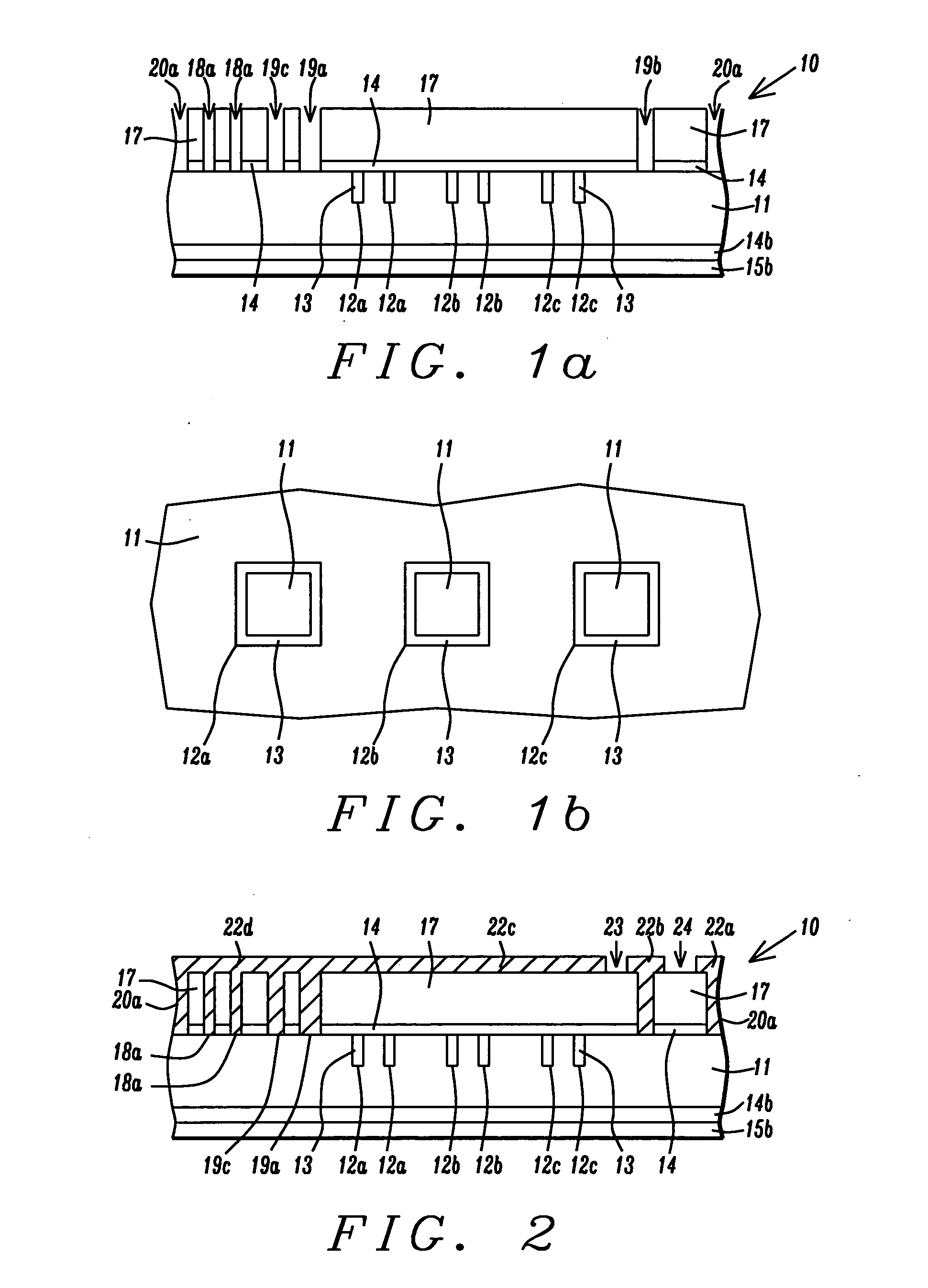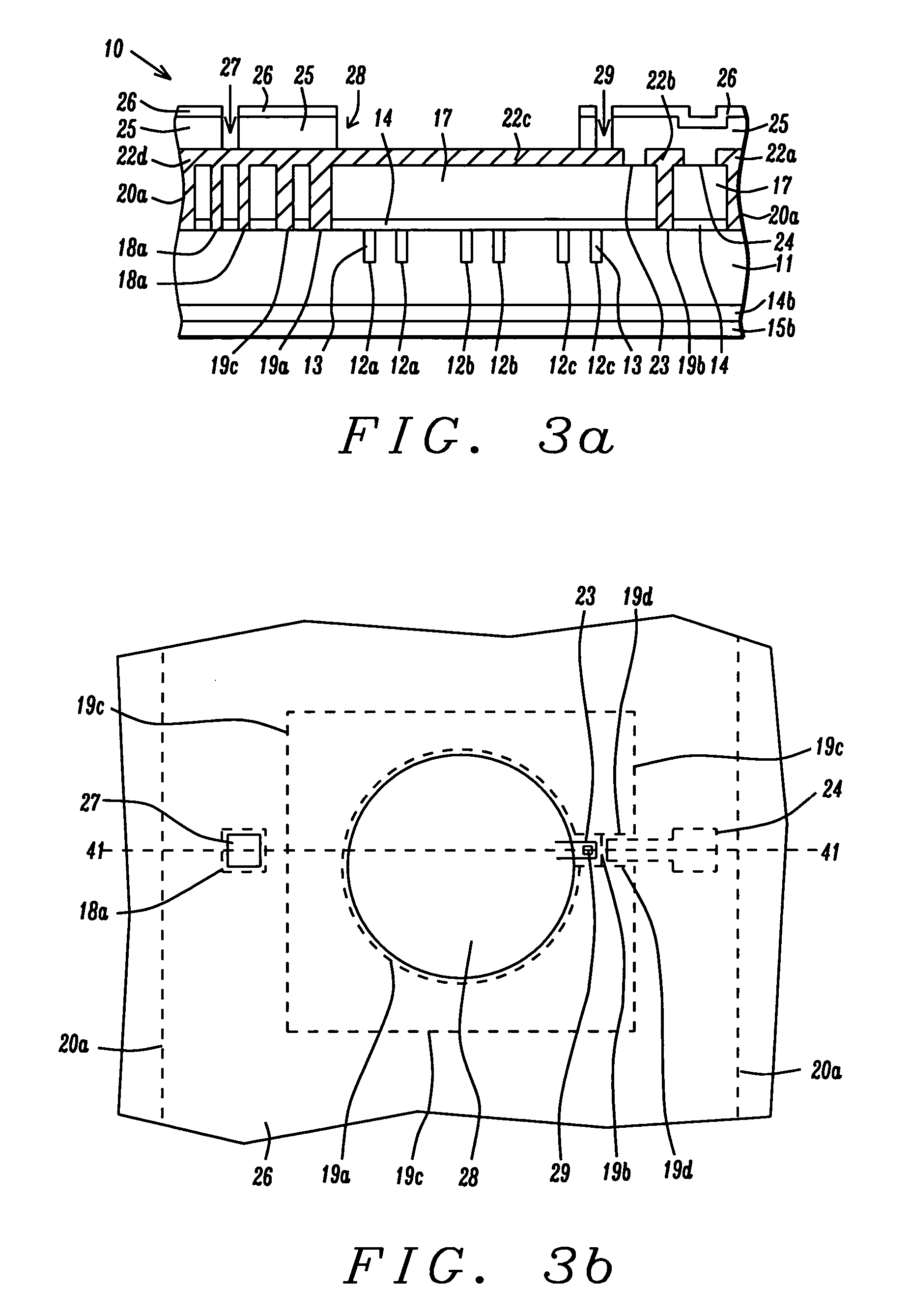Silicon microphone with softly constrained diaphragm
a silicon microphone and diaphragm technology, applied in the direction of transducer diaphragms, semiconductor electrostatic transducers, instruments, etc., can solve the problems of significant affecting the compliance of the silicon microphone diaphragm, the diaphragm can either buckle or become stiff, and the intrinsic stress is not known. , to achieve the effect of reducing the intrinsic stress
- Summary
- Abstract
- Description
- Claims
- Application Information
AI Technical Summary
Benefits of technology
Problems solved by technology
Method used
Image
Examples
first embodiment
[0030] One embodiment of the silicon microphone sensing element according to the present invention will be described first and the novel process sequence used to form the first embodiment will be described in a later section. It is understood that a microphone sensing element based on a material other than silicon may be fabricated by alternative embodiments described herein. Referring to FIG. 7, a microphone sensing element 10 is constructed on a substrate 11 such as silicon which may have an n-type dopant and a resistivity as low as 0.01 ohms-m. The substrate 11 preferably has front and back sides that are polished. There is a thermal oxide layer 14 about 3000 Angstroms thick on the front side of substrate 11 and above the thermal oxide layer is a PSG layer 17 about 3.7 microns thick. The back side of substrate 11 has a stack of layers comprised of a lower thermal oxide layer 14b (about 3000 Angstroms thick) on the substrate and an upper PECVD silicon nitride layer 15b with a thic...
second embodiment
[0041] According to the present invention, there is a microphone sensing element 50 having a softly constrained diaphragm as depicted in FIGS. 15-17. Referring to FIG. 15, a microphone sensing element 50 is fabricated on a substrate 51 such as silicon which may have an n-type dopant and a resistivity as low as 0.01 ohms-cm. The substrate 51 preferably has front and back sides that are polished. Certain regions on the front side of the substrate 51 have trenches 52 filled with an oxide layer 54 that is about 2 microns thick above the trenches. Preferably, the trenches are aligned below an electrical lead-out arm 61c and first electrode 63 to be described in a later section. The oxide layer 54 and an overlying undoped first polysilicon (poly 1) layer 55 about 0.3 to 0.5 micron thick form a stack in the shape of one or more rectangular islands that cover the trenches 52 and a portion of the substrate 51 around the trenches. The oxide filled trenches serve to reduce substrate parasitic ...
PUM
 Login to View More
Login to View More Abstract
Description
Claims
Application Information
 Login to View More
Login to View More - R&D
- Intellectual Property
- Life Sciences
- Materials
- Tech Scout
- Unparalleled Data Quality
- Higher Quality Content
- 60% Fewer Hallucinations
Browse by: Latest US Patents, China's latest patents, Technical Efficacy Thesaurus, Application Domain, Technology Topic, Popular Technical Reports.
© 2025 PatSnap. All rights reserved.Legal|Privacy policy|Modern Slavery Act Transparency Statement|Sitemap|About US| Contact US: help@patsnap.com



